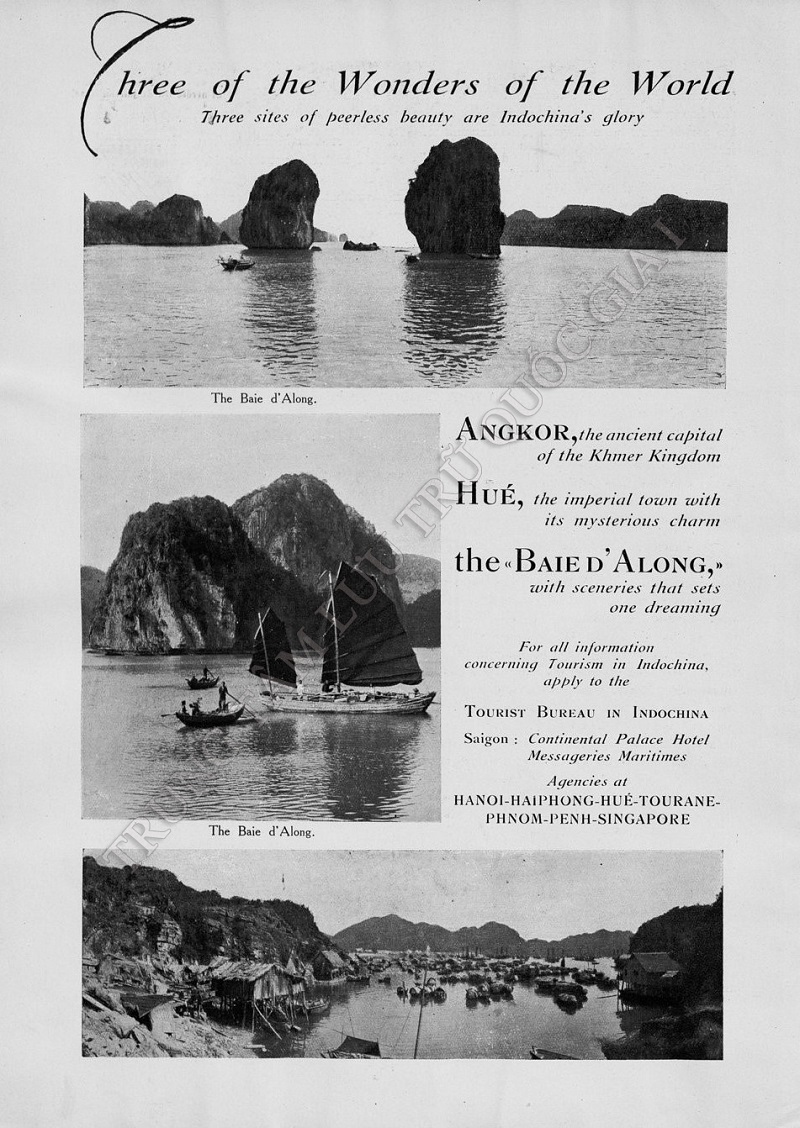The exhibition entitled “Indochina – the wonderland” will be held in virtual format at the website http://archives.org.vn or https://www.facebook.com/luutruquocgia1 from July 9.
| A tourism advertising brochure of Indochina. Photo: National Archives Center I |
According to the National Archives Center I, the exhibition will show the history as well as the rich natural resources of three Indochinese countries, namely Vietnam and Laos and Cambodia, through hundreds of black and white photographs taken in the late 19th century and the early 20th century.
The exhibition consists of three parts: “Indochina – the land of wonders”; “Indochinese Seas – the tropical paradise” and “Indochinese Mountains – Ideal resorts”.
Along with the photos, there are many reviews and comments from the French about this charming and enchanting yet mysterious region.
Few people know that the first tourist route connecting Saigon and Angkor was established in Indochina in 1929.
|
The bird’s eye view photo of Saigon- Cholon area |
Besides, few others know exactly about the first tourist sites that were built by the French in Vietnam. These include the Ba Vi mountain of Hanoi with French-style villas, which were built in 1914; Sapa- the “French colonial resort kingdom” in Lao Cai province (unknown year of discovery); the Tam Dao tourist area in Vinh Phuc city that was established in 1904; the Ba Na mountain in Da Nang city with Morin hotel and a few motels which began to welcome guests in 1920; and the “city of love” Da Lat, which was found by doctor Yersin in 1893.
More than a century later, these are still the favorite travel destinations of both local and international travelers.
In 1930, the Wagons-Lits/Cook tourism company and the Indochina government agreed to promote the colony’s tourism. In 1937, after the completion of the Trans-Indochina railway, the Governor General suggested Wagons-Lits/Cook Company open a representative office in Hanoi or Saigon.
Interested people will also have the opportunity to learn more about the history and culture of Indochina through the exhibition whose closing date has not yet been revealed.
| The general view of Angkor Wat Temple, Cambodia in the early 20th century |
| The bird’s eye view photo of Angkor Wat Temple |








